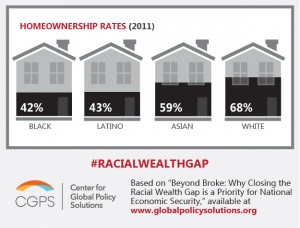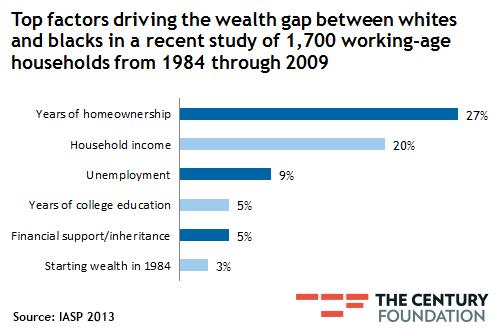The Color of Wealth Summit: Advancing a New Social Contract for a Fair and Inclusive Economy
On April 30, RESULTS Director of U.S. Poverty Campaigns Meredith Dodson and I attended the Color of Wealth Summit, hosted by the Center for Global Policy Solutions and Insight Center for Community Economic Development. For the past several weeks, I have been taking a deep dive into the racial wealth gap and how it has pervaded the lives of people of color across the country. I started with knowing this much: for every dollar in wealth held by the typical white family in 2011, the typical Latino and African-American families only own six and five cents respectively1. As if that is not astounding enough, the Color of Wealth Summit proceeded to delve into more unacceptable disparities but also the avenues of making wealth more equitable. In addition to policy and research experts, Congress members such as Congressman Butterfield (D-NC), Congresswoman Chu (D-CA), Senator Hirono (D-HI), Congressman Conyers (D-MI), Congresswoman Maloney (D-NY), Congressman Cleaver (D-MS), and Congresswoman Waters (D-CA) attended the conference and spoke to the significance of this conversation as well as their role in achieving change. The sessions ranged from the macroeconomic effects of racial wealth inequality to tax fairness and included recommendations in designing and implementing equitable policies.
I had several important takeaways from this daylong event. While the recovery from the Great Recession has been uneven, it has been particularly unequal for many communities of color. The income inequality conversation has spurred debate but that topic cannot be complete without the emphasis on the racial wealth inequality. The median white household had $111,146 in wealth holdings, compared to just $7,113 for the median Black household and $8,348 for the median Latino household.2
The data and research on the racial wealth gap is incredibly helpful in understanding the issue. But what I appreciated most was the framework in which to understand the racial wealth gap. The racial wealth gap is not just a natural occurrence, nor is it a consequence of individual deficiencies. This disparity is both an intended and unintended consequence of government policies and corporate practices to disadvantage communities of color. Wealth is incredibly valuable in our society — home ownership incentives has shaped the creation of the middle class and opened access to high quality education, good jobs and savings for retirement. While America still values homeownership and other forms of wealth, perpetual racial segregation and discrimination ensures that only some have access to that wealth. As a person that is interested in government’s role in economic well-being, it was critical for me to understand discriminatory policies and its everlasting relevance to U.S. poverty. Poverty and wealth disparities did not just happen but rather it was created. Therefore, panelists called for intentional policies to reverse this produced gap. As someone who has always been a proponent of educational equity, I assumed that everyone was going to talk about educational attainment and the importance of college in amassing wealth. But the panelists at the Summit made it clear that education is not the great equalizer.3
Even though education is traditionally viewed as the vehicle of opportunity, it has not come close to undoing the entrenched wealth gap. It is particularly disheartening to see that Black college graduates own, on average, less wealth than a White hig h school dropout. Disparities can also be found amongst homeownership rates. Particularly only 42 and 43 percent of Black and Latino families, respectively, own homes.
h school dropout. Disparities can also be found amongst homeownership rates. Particularly only 42 and 43 percent of Black and Latino families, respectively, own homes.
Clearly, with such disparate rates, homeownership has a critical role in the wealth gap.
The Color of Wealth Summit provided a space for politicians, advocates, and policy experts to engage in this important issue and significant opportunity to continue the conversation. It was a momentous chance to build knowledge but also be equipped with the tools to close the racial wealth gap.
The Center for Global Policy Solutions has just posted the taped recordings of the Color of Wealth Summit. Listen directly to policy and research experts on the Racial Wealth Gap. To learn more about the racial wealth inequality, visit RESULTS’ page on the racial wealth gap.